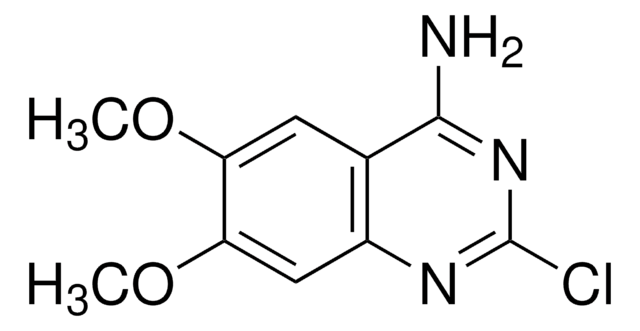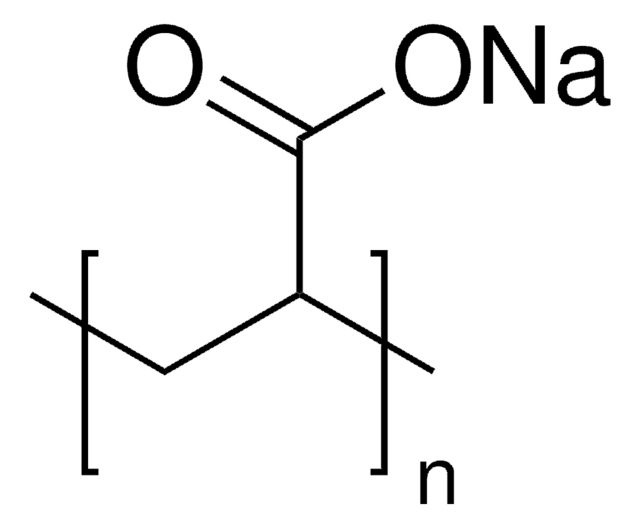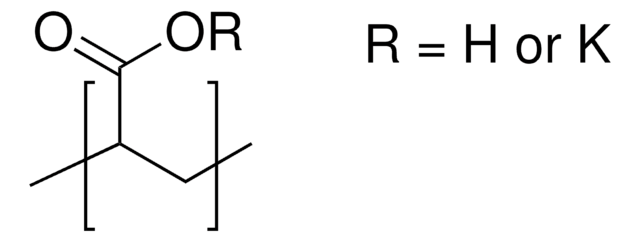523925
Poly(acrylic acid) solution
average Mw ~100,000, 35 wt. % in H2O
Synonym(s):
PAA
Sign Into View Organizational & Contract Pricing
All Photos(1)
About This Item
Linear Formula:
(C3H4O2)n
CAS Number:
MDL number:
UNSPSC Code:
12162002
PubChem Substance ID:
NACRES:
NA.23
Recommended Products
mol wt
average Mw ~100,000
concentration
35 wt. % in H2O
density
1.14 g/mL at 25 °C
SMILES string
OC(=O)C=C
InChI
1S/C3H4O2.Na/c1-2-3(4)5;/h2H,1H2,(H,4,5);/q;+1/p-1
InChI key
NNMHYFLPFNGQFZ-UHFFFAOYSA-M
Looking for similar products? Visit Product Comparison Guide
General description
Poly (acrylic acid) (PAA) is hygroscopic, brittle and colorless in nature with Tg at nearly 106oC. At temperatures above 200, up to 250oC, it loses water and becomes an insoluble crosslinked polymer anhydride. Solubility of dried PAA in water increases with rise in temperature. Concentrated solutions of PAA in water are thixotropic in nature.
Application
PAA is used in the preparation of nano-hydroxyapatite polyacrylic acid (Hap/PAAc) biocomposites.†Other probable applications of PAA are: to study solute diffusion in Polyvinyl alcohol/PAA copolymer hydrogels†, synthesizing poly(N-isopropylacrylamide)-block-PAA copolymer which responds to both temperature and pH stimuli†, in preparing block copolymer of oligo (methyl methacrylate)/PAA for micellar delivery of hydrophobic drugs†, and as a thickening agent for adhesives.
Signal Word
Danger
Hazard Statements
Precautionary Statements
Hazard Classifications
Aquatic Acute 1 - Aquatic Chronic 2 - Eye Dam. 1 - STOT SE 3
Target Organs
Respiratory system
Storage Class Code
10 - Combustible liquids
WGK
WGK 1
Flash Point(F)
212.0 °F - closed cup
Flash Point(C)
100 °C - closed cup
Personal Protective Equipment
dust mask type N95 (US), Eyeshields, Gloves
Choose from one of the most recent versions:
Already Own This Product?
Find documentation for the products that you have recently purchased in the Document Library.
Customers Also Viewed
T Inoue et al.
Journal of controlled release : official journal of the Controlled Release Society, 51(2-3), 221-229 (1998-08-01)
An AB block copolymer of oligo(methyl methacrylate) (oMMA) and poly(acrylic acid) (PAAc) has been synthesized. The block copolymer forms micelles in an aqueous medium, as confirmed by a fluorescence probe technique using pyrene. Doxorubicin hydrochloride was incorporated into the micelle
P L Zeeuwen et al.
The Journal of investigative dermatology, 116(5), 693-701 (2001-05-12)
Using serial analysis of gene expression on cultured human keratinocytes we found high expression levels of genes putatively involved in host protection and defense, such as proteinase inhibitors and antimicrobial proteins. One of these expressed genes was the recently discovered
Yanxia Wang et al.
International journal of pharmaceutics, 441(1-2), 170-180 (2012-12-15)
A novel galactose-decorated cross-linked micelles (cl-micelles) with ionic cores using cystamine (Cys) as a biodegradable cross-linker was prepared by using block ionomer complexes of poly(ethylene glycol)-b-poly(2-acryloxyethyl-galactose)-b-poly(acrylic acid) (PEG-b-PAEG-b-PAA) and Ca(2+) (PEG-b-PAEG-b-PAA cl-micelles/Cys). Doxorubicin (DOX) was successfully incorporated into the ionic
Daniel L Miller et al.
The Annals of thoracic surgery, 95(3), 1050-1056 (2013-01-22)
Skeletal chest wall reconstruction can be a challenge, depending on the indication, location, and health of the patient; various materials are available. Recently, biomaterials that are remodelable (bovine pericardium patch; Veritas, Synovis Life Technologies Inc, St Paul, MN) or absorbable
Kang Zhong et al.
Carbohydrate polymers, 92(2), 1367-1376 (2013-02-13)
Phosphate rock (PHR), a traditional fertilizer, is abundant, but is hard to be utilized by plants. To improve the utilization of PHR, and to integrate water-retaining and controlled-release fertilizers, an agricultural superabsorbent polymer based on sulfonated corn starch/poly (acrylic acid)
Our team of scientists has experience in all areas of research including Life Science, Material Science, Chemical Synthesis, Chromatography, Analytical and many others.
Contact Technical Service








